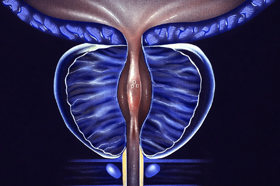PSMA PET/CT SUVmax Helps Predict Likelihood of Clinically Significant Prostate Cancer in Biopsy
Images

Prebiopsy MRI increases the detection rate of clinically significant prostate cancer (csPCa). PSMA PET/CT SUVmax of the prostate may offer additional value in predicting the likelihood of csPCa in biopsy, according to a study published in The Prostate.
A single-center cohort study involving patients with biopsy-proven PCa who underwent both MRI and PSMA PET/CT between 2020 and 2021. Logistic regression models were developed for International Society of Urological Pathology (ISUP) Grade Group (GG) ≥ 2 and GG ≥ 3 using noninvasive prebiopsy parameters: age,
(log-)prostate-specific antigen (PSA) density, PI-RADS 5 lesion presence, extraprostatic extension (EPE) on MRI, and SUVmax of the prostate. Models with and without SUVmax were compared using Likelihood ratio tests and area under the curve (AUC). DeLong's test was used to compare the AUCs.
The study included 386 patients, with 262 (68%) having ISUP GG ≥ 2 and 180 (47%) having ISUP GG ≥ 3. Including SUVmax significantly improved both models' goodness of fit (p < 0.001). The GG ≥ 2 model had a higher AUC with SUVmax 89.16% (95% confidence interval [CI]: 86.06%-92.26%) than without 87.34% (95% CI: 83.93%-90.76%) (p = 0.026). Similarly, the GG ≥ 3 model had a higher AUC with SUVmax 82.51% (95% CI: 78.41%-86.6%) than without 79.33% (95% CI: 74.84%-83.83%) (p = 0.003). The SUVmax inclusion improved the GG ≥ 3 model's calibration at higher probabilities.
The authors concluded that, “SUVmax of the prostate on PSMA PET/CT potentially improves diagnostic accuracy in predicting the likelihood of csPCa in prostate biopsy.”